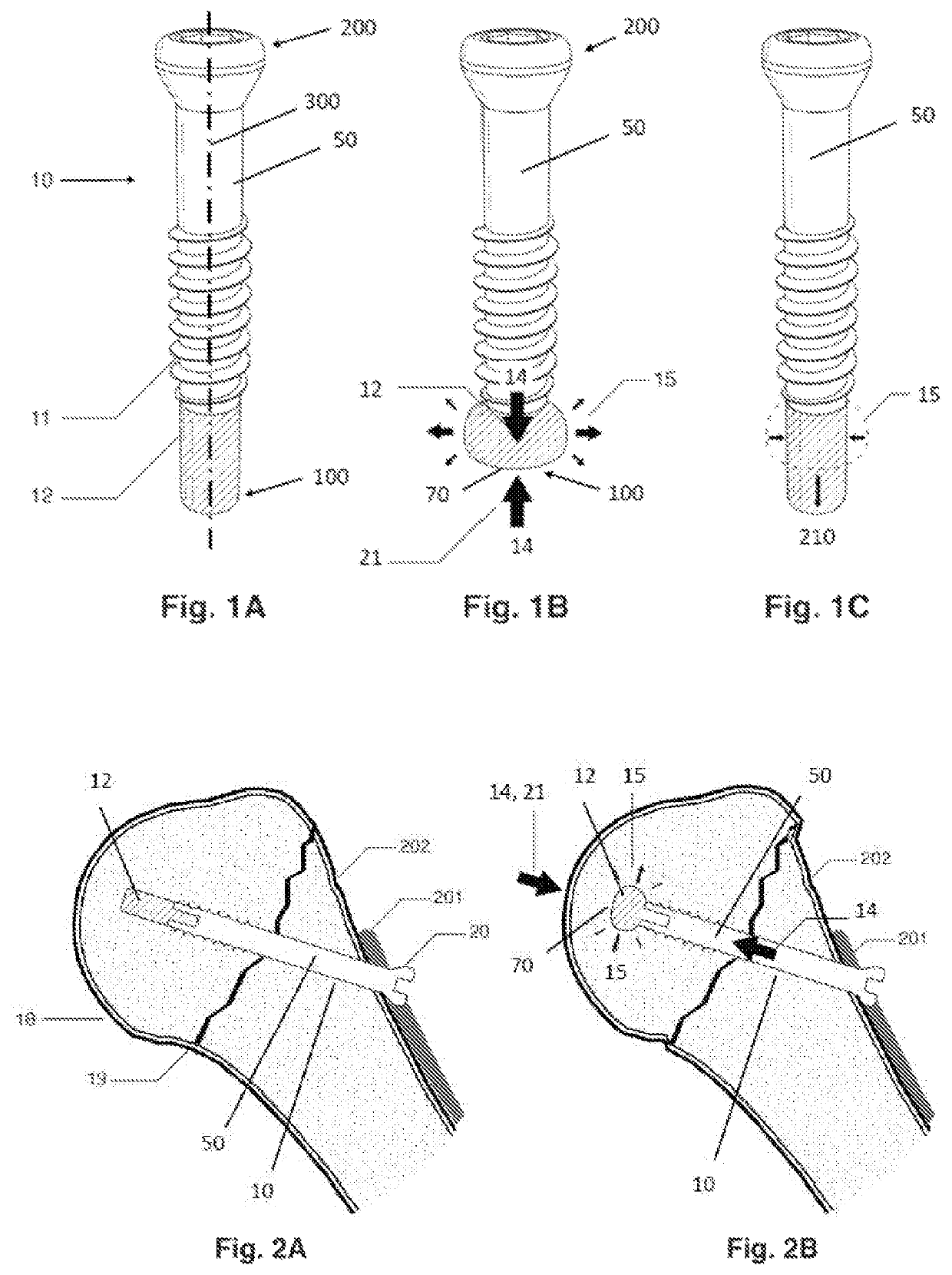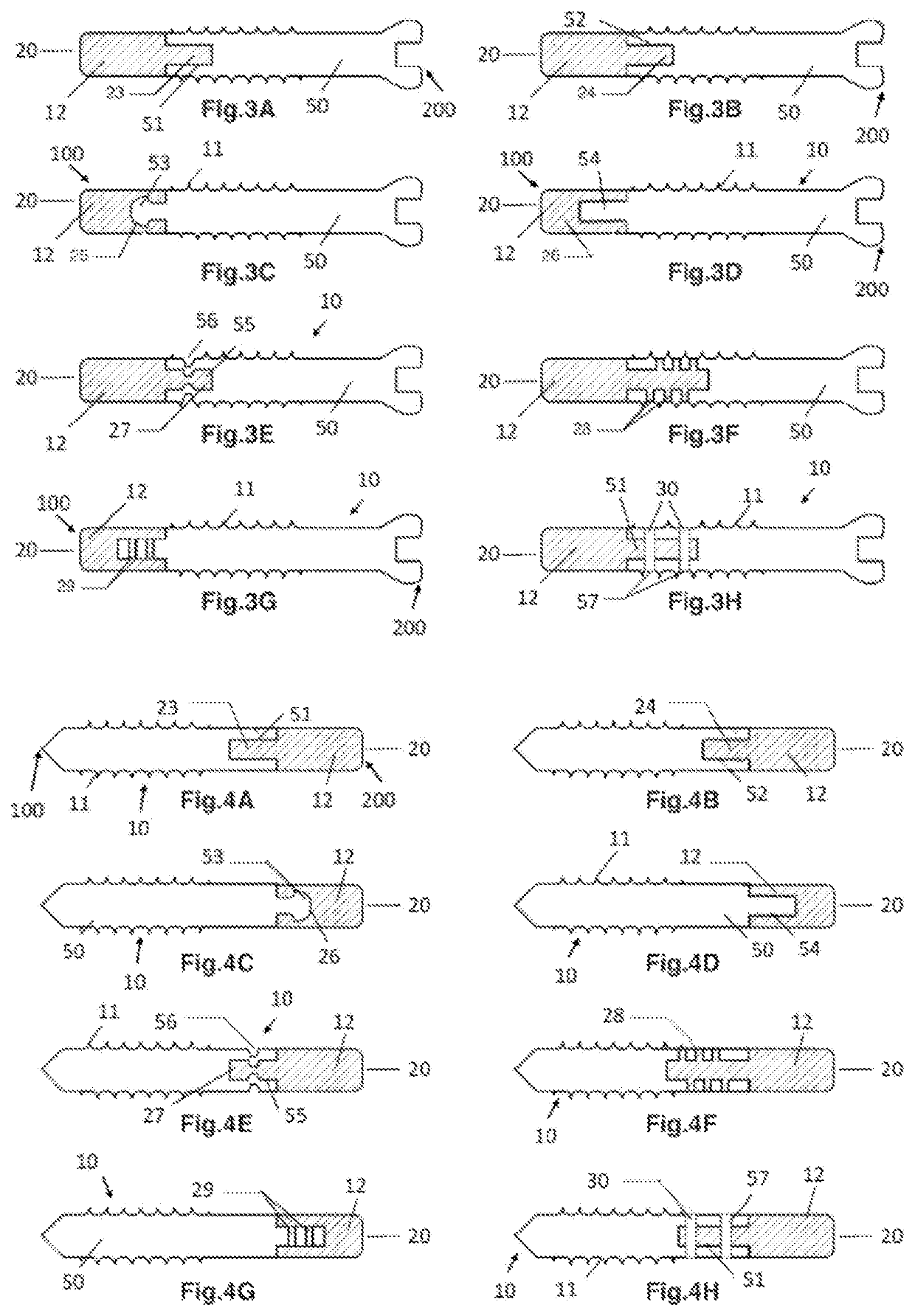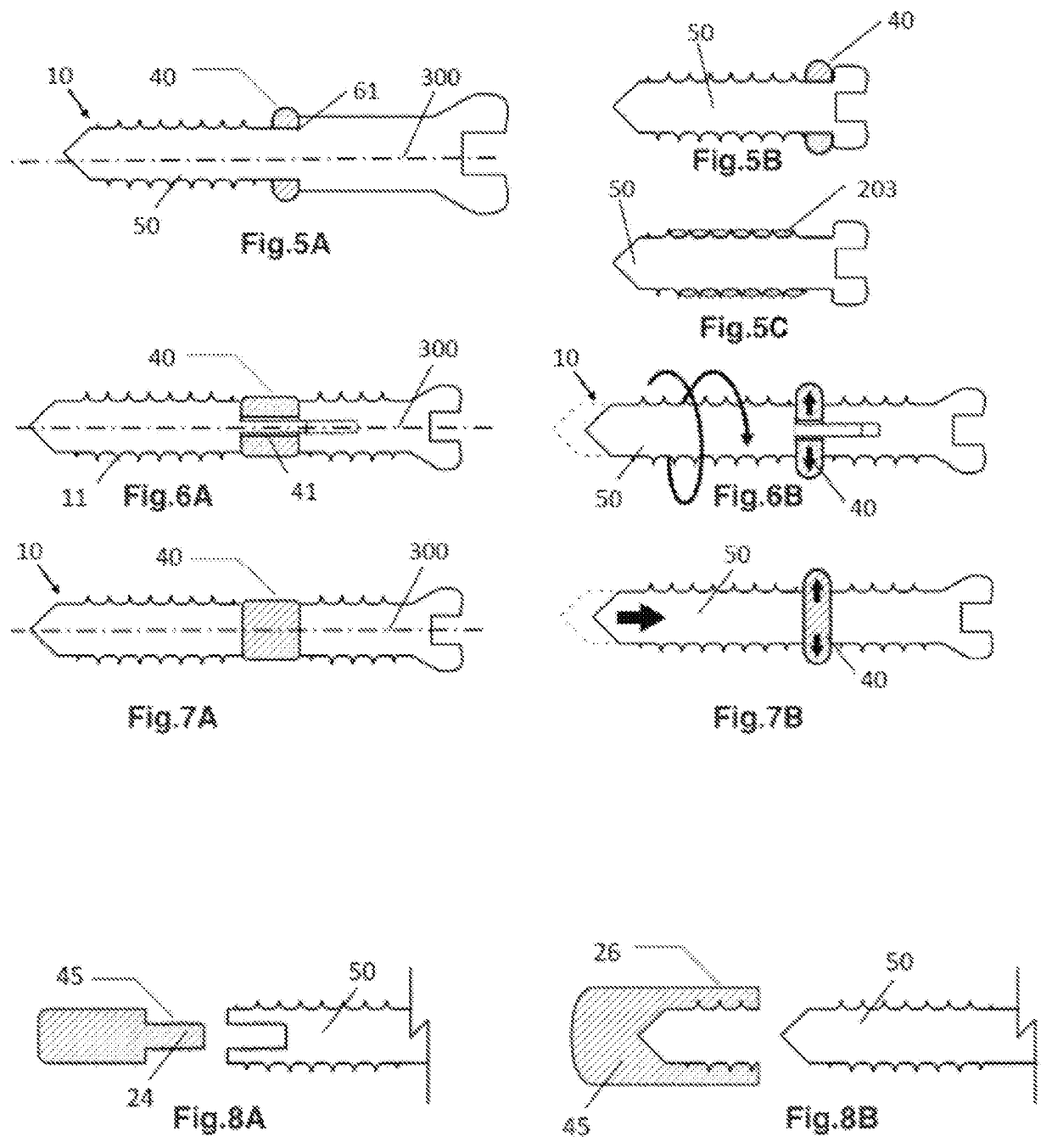Anti-penetration bone implant device and method
a bone implant and anti-penetration technology, applied in the field of bone implant devices and methods, can solve the problems of reduced implant ability, high fracture rate, and insufficient secure attachment of implant screws or other similar fixation devices, and achieve the effect of being convenient, inexpensive, and highly effectiv
- Summary
- Abstract
- Description
- Claims
- Application Information
AI Technical Summary
Benefits of technology
Problems solved by technology
Method used
Image
Examples
example 2
l Bone Penetration Test 1
[0187]In FIG. 15B, there is shown the results of artificial bone penetration experiments, comparing the rates of penetration of bone screws featuring dynamically expanding tips with the rates of penetration of conventional blunt-tipped bone screws. These experiments, conducted by the inventors under controlled laboratory conditions based on standards detailed in ASTM F543, tested the penetration rate of 5 mm diameter bone screws placed in shallow 6 mm diameter pilot holes drilled into artificial bone testing material consisting of polyurethane foam blocks with a density of 0.16 g / cc (PU Block #10 produced by Sawbones™, Inc.). Each screw type (either conventional blunt-tipped steel alloy or steel alloy with dynamically expandable tip of silicone rubber foam), was loaded axially by biomechanical testing machine with a sinusoidal load of 50-135N at 1 Hz, until penetration of the screw through the artificial bone was recorded (representing approximately 1.0 cm o...
example 3
l Bone Penetration Test 2
[0234]In FIG. 37, there is shown the results of synthetic bone tissue (Sawbones™ Type 10—0.16 g / cc rigid polyurethane foam, manufactured as a substrate for simulating the mechanical properties of human osteoporotic bone) penetration experiments, in which a comparison the rates of penetration of bone screws featuring dynamically expanding tips as provided by the current invention, with the rates of penetration of conventional bone screws, such rates of penetration being in common clinical use. These experiments, conducted by the inventors under controlled laboratory conditions based on standards detailed in ASTM F543, were utilized to determine the penetration rate of 5 mm diameter bone screws placed in shallow 6 mm diameter pilot holes drilled into the surfaces of the synthetic bone material.
[0235]Each screw type was loaded axially by use of an MTS™ a mechanical testing machine with a displacement rate of 5 millimeters per minute, until penetration of the sc...
example 4
l Bone Penetration Test 3
[0239]In FIG. 38, there is shown the results of synthetic bone tissue (Sawbones™ Type 10—0.16 g / cc rigid polyurethane foam, manufactured as a substrate for simulating the mechanical properties of human osteoporotic bone) penetration experiments, comparing the rates of penetration of bone screws including dynamically expanding tips of the current invention with the rates of penetration of conventional bone screws in common clinical use.
[0240]These experiments, conducted by the inventors under controlled laboratory conditions based on standards detailed in ASTM F543, provided for the testing of the penetration rate of 5 mm diameter bone screws placed in shallow 6 mm diameter pilot holes drilled into the surface of the synthetic bone material.
[0241]Each screw type, was loaded axially by way of an MTS™ mechanical testing machine with a displacement rate of 5 millimeters per minute, until penetration of the screw through the synthetic bone was achieved (represent...
PUM
 Login to View More
Login to View More Abstract
Description
Claims
Application Information
 Login to View More
Login to View More - R&D
- Intellectual Property
- Life Sciences
- Materials
- Tech Scout
- Unparalleled Data Quality
- Higher Quality Content
- 60% Fewer Hallucinations
Browse by: Latest US Patents, China's latest patents, Technical Efficacy Thesaurus, Application Domain, Technology Topic, Popular Technical Reports.
© 2025 PatSnap. All rights reserved.Legal|Privacy policy|Modern Slavery Act Transparency Statement|Sitemap|About US| Contact US: help@patsnap.com



